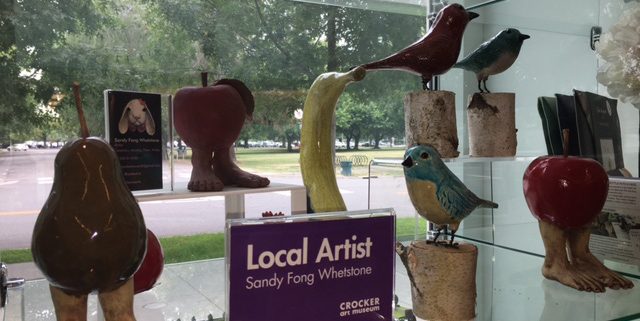Creating the Consignment Connection
June 26, 2017
By Pam Pesetti
Consigning items in your Museum Store can be a wonderful way to support local talent, and a beneficial revenue booster if done with intent and honesty. The key is clear guidelines, contracts, and communication. Once your criteria are in place, you will be more confident in communicating with artists and finding items that will add to your bottom line.
Determine how much of your sales should be devoted to consignment. I revamped consignment when I started my position two years ago to create a more balanced sales floor. I let some artists go that were slow movers and brought in others who had a stronger connection to our exhibits or permanent collection. The outcome has been a more profitable store. The following are a few tips to navigate the consignment process.
Selection
Start out by having clear guidelines that you communicate to artists in regards to viewing products. Have the artist send you a link to their website (if applicable), clear photos and a resume listing other locations where their products are represented. I have a standard email that explains our thoughtful selection process. Though the artist’s items may be wonderful, they won’t always be a good fit due to timing, space, materials, price or relation to exhibits.
If the work is a good fit, I will reach out to the artist to set up an appointment. Prior to our meeting, I email a copy of the contract for their review so they are prepared to discuss all of the details in person. Artists often ask me to determine how much they should charge for a piece. I will often push back on the artist to decide for themselves how much their time, materials and profit is worth. It is very important that the artist enters into the contract feeling that their work is valued. If the price is out of range from what our market can handle, I will be honest; underselling their work will only end up being frustrating for both parties.
Honesty
Be upfront with artists on the space that you have available for their work and price points that will sell. I often bring new artists in for exhibit-related merchandise. Our contract has three options: 90-Day trial consignment, exhibit-related consignment, and event-related consignment. Having these options gives the artist and the store an opportunity to see if items sell during a specific timeframe.
For work that isn’t a match, perhaps recommend other venues that might sell their work. Our museum partners with a local arts organization for a juried holiday artisan market that is often a good alternative.
Contract
Have a clear contract that states the terms of agreement including; length of the consignment, who is responsible for the items, the percentage split of profits, when payment will occur, delivery and pick-up methods and time frames. Both artist and store manager should sign the contract when dropping off and picking up items. Details of the revenue split and payment terms should be clearly communicated verbally and in writing. We split 50/50 in our store with payment on a quarterly basis. I verbally communicate the terms to avoid confusion. The consignment agreement I created for the Crocker Art Museum can be found here. Feel free to use this as a template to draft an agreement for your store.
Confidence
Remember that you are the expert in your field. It is okay to make suggestions to artists for products that you think will sell. Often a product will be good, but the packaging is wrong. I recently had a local artist show me beautiful pillows made from images of her watercolors. However, there was no protective cover. I told her to reach out again if she packaged them. A few months later she had the pillows in individual sleeves with hangtags about her work. I now carry them in the store and they are selling quickly. Don’t be afraid to ask for what you need from artists to make their work more salable. Often, they appreciate the feedback and honesty.
Marketing
When you bring on a new artist, have a clear idea of where the products will be displayed. It is frustrating for the artist to search the store only to find their work hidden amongst other items. Educate your staff about each artist’s work so they can promote the merchandise. Better yet, take a field trip with your staff to their studio. Visitors love to support local artists, especially if they sense your enthusiasm. Create specific signage to illuminate consignment merchandise. We have our marketing department create LOCAL ARTIST signs with the artist’s name. This shows the museum’s support of local artists and gives the artist a platform to shine.
Consignment artists in your Museum Store will give you an edge on having unique items that will delight your visitors. By being intentional in your contracts and communication, both the artist and Museum Store can benefit.
Good luck and please feel free to reach out for samples of my contract or questions at ppesetti@crockerartmuseum.org.
Pam Pesetti is the Museum Store Manager at the Crocker Art Museum in Sacramento, California. She has been an MSA member for two years.
Art Museum in Sacramento, California. She has been an MSA member for two years.








Leave a Reply
Want to join the discussion?Feel free to contribute!